Immerse yourself in the world of Scandinavian interiors, a design philosophy that captures simplicity, functionality, and an inherent connection to the natural world. Historically prioritizing the use of neutral color schemes, the Scandi design aesthetic has a universally charming appeal in its minimalist outlook. This essay unravels the methodical incorporation of vibrant hues inspired by garden landscapes into the Scandi palette without losing its quintessential minimalism. A deep-dive into the significance of nature’s palette elucidates the profound psychological and seasonal connections with different garden colors. Embarking on a practical journey of harmoniously integrating these colors into Scandi themes, we aim to equip you with creative strategies, balanced aesthetics, and insightful usage of materials and textures. Further, tangible real-world examples and case studies will serve as your guide on this colorful journey of transforming your living spaces into refreshing_scapes.
Understanding Scandi Interiors
Understanding Scandinavian Interior Design
Scandinavian interior design is defined by its emphasis on simplicity and functionality without neglecting aesthetics. Originating in Nordic countries, this design style is characterized by a blend of textures, contrasts, and soft hues to create a sleek modern and aesthetically pleasing effect. The Scandinavian interior design philosophy is rooted in a lifestyle that values simplicity, minimalism, and functionality. These philosophical fundamentals are reflected in the spartan yet stylish interiors typical of Scandinavian homes.
The use of natural materials is a key element in Scandinavian interiors. Materials such as wood and leather are often used for furniture, flooring, and accents to evoke a sense of connection with nature. Wool and linen are commonly used textiles, adding warmth and texture to these interiors. Lighting is also given special consideration in Scandi design due to the long periods of darkness experienced in Nordic countries during winter. Thus, maximizing natural light is imperative, elsewhere, warm artificial lighting is employed to create a cozy atmosphere.
The Neutral Colors of Scandi Interiors
Neutral colors are a cornerstone in Scandinavian interiors, acting as the perceivable connection between nature and indoor living spaces. Typically, these interiors are painted in shades of gray, white, and beige, with smaller elements of black used as contrasting accents. These neutral colors serve as the base for any additional colors, usually derived from natural or garden-inspired hues, to sit on.
The popularity of Scandinavian interior design has surged globally, not just because it appeals aesthetically, but also for its emphasis on creating functional spaces that encourage a connection with nature. The neutral color palette in Scandinavian designs is oftentimes juxtaposed with garden-inspired colors to bridge the gap between outdoor and indoor living.
A Glimpse at Nature’s Palette in Scandinavian Interiors
Rooted in the Nordic tradition of aligning with natural elements, Scandinavian interior design commonly utilizes ‘Nature’s Palette’, or garden-inspired colors. These encompass a broad spectrum from earthy browns and greens to lively floral shades, tailored around individual choice and the overarching aesthetic of the design.
Balanced, calming tones like browns, greens, and creams elicit a comforting tranquility. Implementing these colors can be achieved through elements like rugs, cushions, decorative items, or even large pieces of furniture. Contrarily, dynamic hues such as poppy red, daffodil yellow, or lavender infuse a space with vibrancy and vivacity. Even though these brighter tones are not typically associated with Scandi design, they can punctuate an otherwise neutral room with unexpected delight and appeal.
In conclusion, integrating garden-inspired colors into Scandinavian interiors cultivates a harmonious fusion of calm and vibrancy. These injections of color juxtapose against, yet complement, the neutral undertones, enhancing visual allure while forging an implicit bond with nature. Ultimately, the application of nature’s palette in Scandi interiors manifests a tranquil, balanced ambiance.
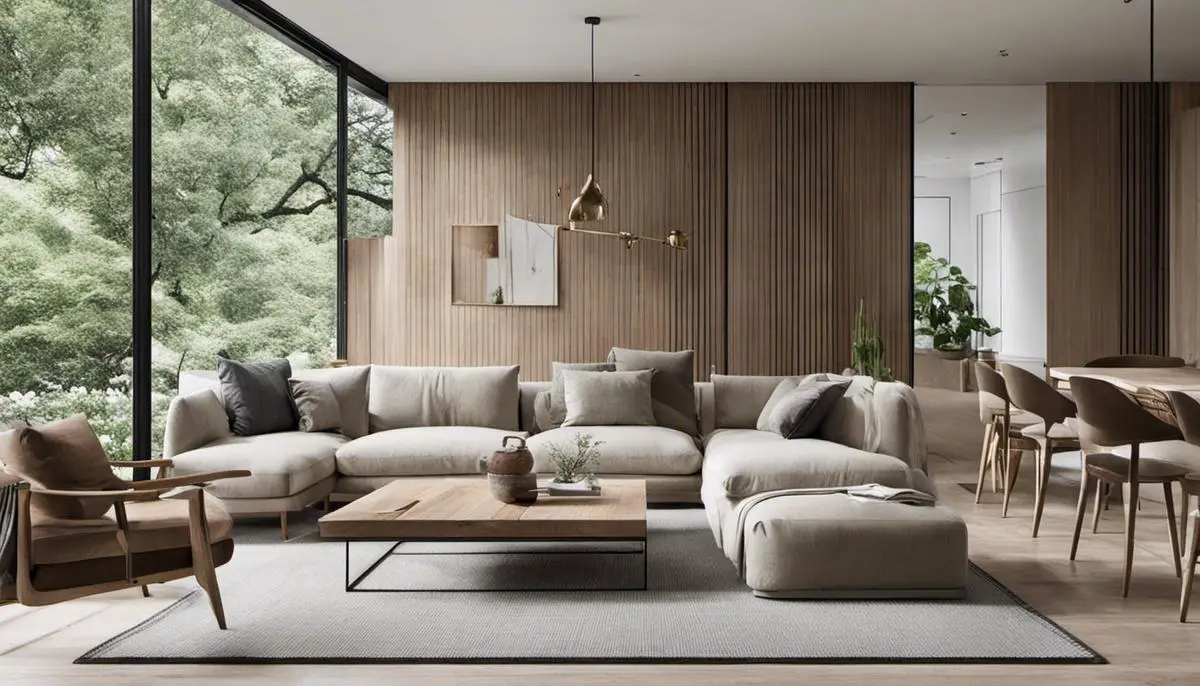
The Palette of Nature and Its Significance
Exploring the Profound Impact of Nature’s Palette in Scandinavian Design Interiors
The use of garden-inspired colors, or nature’s palette, instills a certain level of tranquility, transporting the allure of the outdoors into your interior spaces. These shades are seen more commonly in Scandinavian, or Scandi design interiors, where they align seamlessly with the minimalist, functional attributes characteristic of this design ethos.
Understanding Color and Its Psychological Effects
The use of color, particularly garden-inspired colors, affects our mood and emotions. Studies in color psychology have investigated this influence extensively, and the findings can help guide our color choices in interior design. Greens elicit a sense of tranquility and health, blues inspire calmness and stability, yellows tend to energize and stimulate happiness, and purples often evoke a sense of luxury and creativity. Utilizing these colors in Scandi interiors can influence the room’s atmosphere and our state of mind.
Symbolic Meanings of Garden Colors
Every color in nature’s palette has a symbolic meaning, which can contribute to the overall narrative of your Scandi interior design. Greens symbolize growth, harmony, and freshness, having a strong correlation with nature and the outdoors. Blues represent the sky and the sea, suggesting depth, trust, and stability. Yellows, reminiscent of the sun, are associated with joy, energy, and positivity. Reds, like roses in a garden, symbolize love, strength, and passion.
Garden Colors and Seasonal Influences
The correlation between garden colors and the seasons is also an element to consider in Scandi interiors. For example, warmer hues such as deep oranges, reds, and yellows can resonate with autumn, giving a cozy, welcoming feel. On the other hand, cooler tones like blues, whites, and grays can echo winter’s tranquility. Spring is about rebirth, freshness, and growth, with colors like light greens, pinks, and yellows dominating. Summer might be associated with more vivid colors, like bright blues, purples, and reds.
Incorporating Nature’s Palette into Scandi Interiors
To incorporate nature’s palette into Scandi interiors, choose colors wisely based on the room’s function. For instance, blues might be great for bedrooms or bathrooms where calmness is needed, while greens could be ideal for workspaces or kitchens given their refreshing nature. It’s also helpful to leverage the minimalist nature of Scandi design by letting one color dominate the space and using others as accents.
In Scandi homes, interiors maintain a balance of aesthetic simplicity and functionality. Often composed of a white base color, the Nordic design allows for a fine use of garden colors as accents. Pillows, rugs, wall art, and even a feature wall can bear these colors. Walls adorned with a light green color and working in harmony with indoor plants can bring a calming, connecting-to-nature feeling.
Remember that, though the majority of Scandi interiors use soft and muted hues, bold colors have a place too. A bright yellow chair or a vibrant blue rug can pop against a neutral background, imbuing a sense of joy and energy into the space without ruining the minimalist feel typical of Scandinavian design.
Textures and Materials
The texture and material of the furniture and decor also play a significant role. Consider using light woods and natural materials to enhance the authenticity of your nature-inspired space. Upholstery and knitwear items in garden colors can add an extra layer of coziness, turning your dwelling into a perfect embodiment of ‘hygge,’ a Scandinavian concept that encapsulates a feeling of cozy contentment and wellbeing through enjoying the simpler things in life.
Incorporating Nature’s Palette
Adding a splash of rich, garden-inspired color to your interiors will certainly boost the appeal of your space. For example, blending various tones of blues and greens might evoke the diversity within forests and oceans. Conversely, an exotic mixture of vivid reds and purples could remind you of a spectacular sunset or a blossoming flower field. By skillfully and thoughtfully merging these shades, your Scandi-style interior can magnificently channel the breathtaking palette of nature throughout all seasons.
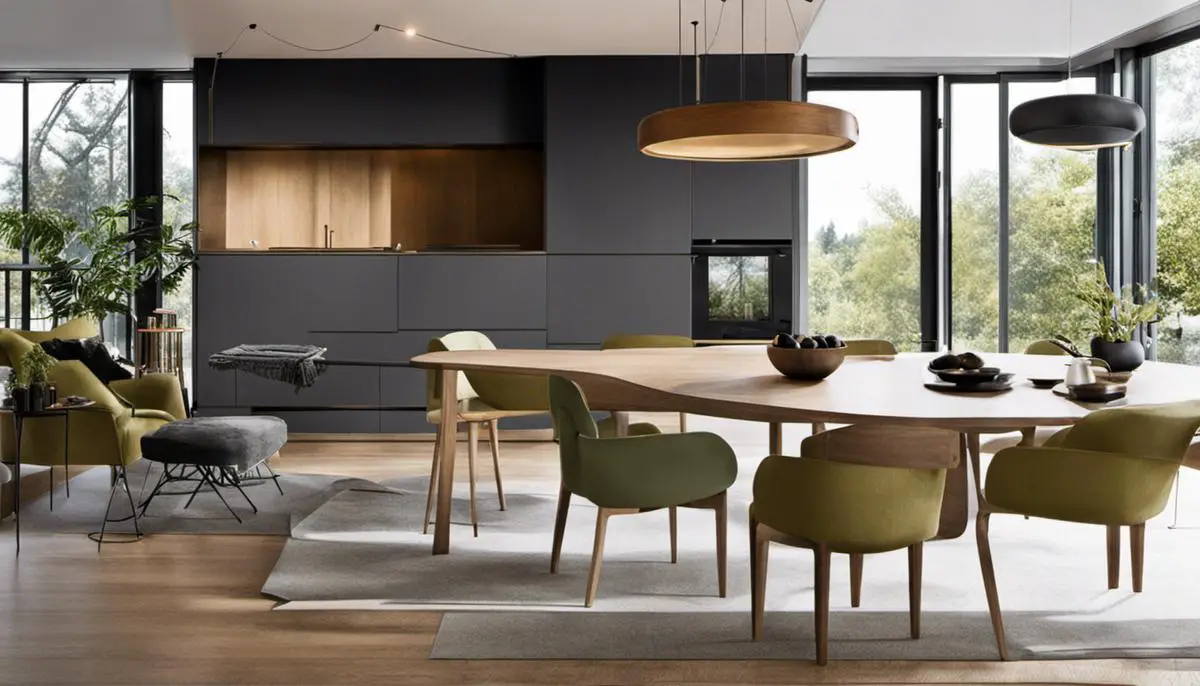
Integrating Garden Colors into Scandi Themes
Appreciating the Scandinavian Aesthetic
It’s important to have a firm grasp on the fundamental elements of Scandinavian design before exploring how nature-inspired hues can enhance this aesthetic. Originating in the Nordic countries during the 1950s, Scandinavian design reveres simplicity, minimalism, and functionalism above all. The charm lies in its minimalist ethos which combines varying textures, contrasts, and muted tones with modern, sleek furnishings to convey an inviting warmth. Scandi interiors typically embrace white walls to accentuate natural light, incorporate raw materials such as wood and leather, and showcase a fondness for straightforward, practical designs. The goal behind the Scandi approach is linking serenity and tranquility within the home.
Identifying Ideal Places to Introduce Color
Integrating garden-inspired colors does not mean painting your walls in vibrant hues. The beauty of Scandi interiors is their predominantly white or neutral backdrop, allowing for smaller, measured introductions of color. Ideal places to introduce color would be decorative accents, focus walls, rugs, linens, and plants.
Take a leaf out of nature’s palette and think about how color emerges in a garden. It’s about small bursts of color against a natural, neutral background. For instance, throw pillows, blankets, pottery and wall art in garden-inspired colors can serve as excellent means to add those bursts of color.
Balancing Pops of Color
Balancing the garden-inspired pops of color requires strategic thinking. The vibrant colors should enhance the Scandi aesthetic, not overwhelm it. Hence, the colors should be sprinkled throughout your space sparingly. Use the 60-30-10 rule where 60% of a room is done in a dominant color (white or neutral in Scandi design), 30% in a secondary color (lighter garden inspired colors), and 10% in an accent color (darker or vibrant garden-inspired color).
Utilizing Different Materials and Textures
Integrating different materials and textures is another way to amplify a Scandi interior’s garden aesthetic. Think of the varied textures found in a garden: smooth pebbles, knobby tree bark, velvety moss, crunchy gravel. Materials such as wood, wicker, ceramics, and wool can bring these garden textures into the home.
A distressed wooden table, a handwoven wicker basket, a wool rug, or a ceramic vase in garden-inspired colors are perfect elements to enhance the overall nature-inspired Scandi look.
Using Plants in Scandi Interiors
Plants are a common way to introduce nature-based colors and elements to a Scandi interior. Indoor greenery softens the minimalist aesthetic and introduces outdoor colors effortlessly. Whether it’s a hanging plant over a window, a small potted plant on a coffee table, or a large palm in a corner, plants can add a lush, garden vibe to a Scandi interior. Plus, they also complement the garden-inspired color palette.
Wrapping up, strictly adhering to the principles of Scandi design is not a compulsory need. After all, your space should be an extension of your individual personality and taste. The introduction of garden-inspired hues can aid in creating an inviting and serene environment that, although fundamentally Nordic, exudes a lively natural warmth, making your home truly unique.
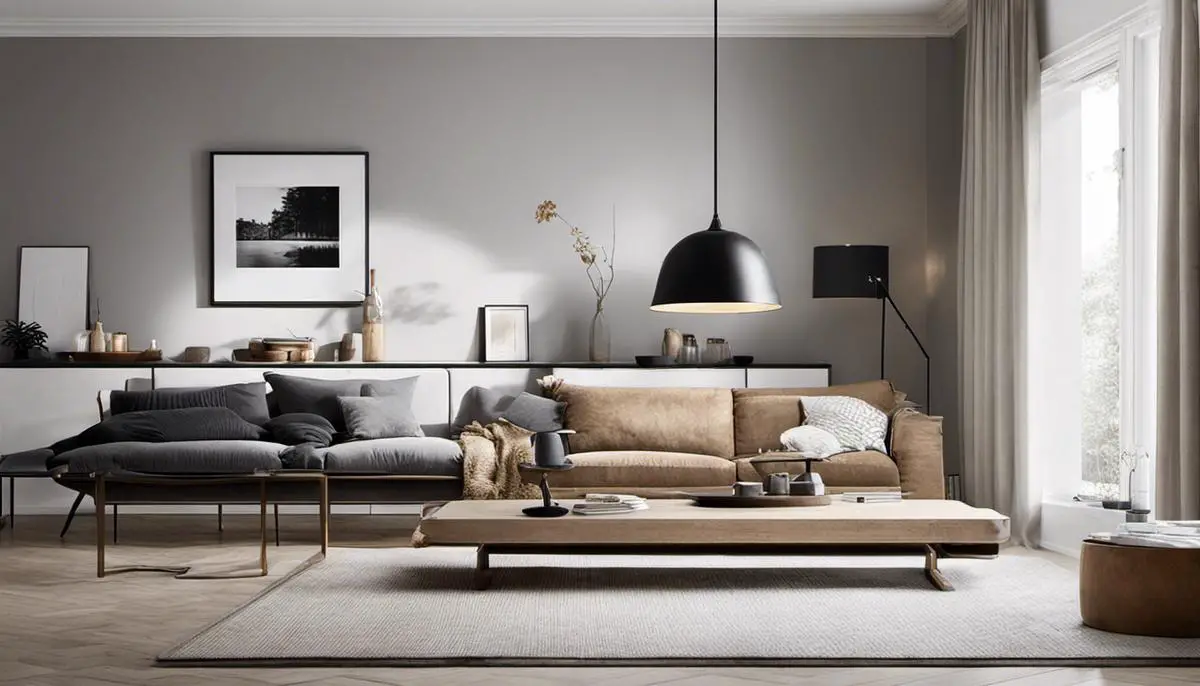
Case Studies of Garden-Inspired Scandi Interiors
Integrating Garden-Inspired Colors into Scandinavian Interior Designs
Scandinavian design, praised for its minimalistic, simple, and functional attributes, can be enriched by garden-inspired colors. While the concept of fusing outdoor elements into interior spaces is quite established, the infusion of nature-inspired colors into Scandi interiors is a definite game changer. This process typically includes integrating color tonalities replicating those in nature, like shades of green, blue, brown, and floral tints into the clean and streamlined aesthetics typical of Scandinavian designs.
Incorporating Greenery in Scandinavian Homes
One notable example is incorporating multiple shades of green, mirroring the colors and textures of the garden. Green accents can help to soften the stereotypical stark white Scandi interiors, breathing life and depth into the room. Whether it’s a toned-down mossy green or a vibrant lime hue, touches of green can add a fresh, botanical feel to the space, evoking a sense of the outdoors. For example, cushions, wall arts, rugs, or even kitchenware in various shades of green can create a visual interest in a predominantly white interior, resulting in a space that feels more vibrant and less sterile.
Fusing Florals and Scandi Aesthetics
Another way to integrate garden-inspired colors into Scandi interiors is by adopting floral motifs and colors. You could opt for floral patterns in pastel hues for your cushions, beddings, or curtains. For instance, rose pink, lavender, or daffodil yellow, when paired with Scandi furniture and design elements, can create a charming and stylish space. Besides textiles, floral wallpapers or murals can be an excellent way to fashion an accent wall, acting as a focal point and breaking the monotony of minimalist design.
Natural Wood Tones and Blue Accents
Lastly, the use of natural wood tones and blue accents resonates with the theme of nature in Scandinavian design. Wood, being an integral part of Scandi decor, can provide a warm and cozy feel that complements cool garden-inspired colors perfectly. Using blue accents, reminiscent of water bodies or the sky, along with wood, can also create a peaceful, airier vibe in Scandi-inspired spaces. Think about a a well-polished wooden floor, paired with soft blue curtains or decor accessories, to create a harmonious blend of natural colors.
Practical Tips
In practice, when incorporating these garden-inspired colors, ensure that the rest of your interior stays neutral and minimal. The idea is to let these colors stand out and make an impact rather than getting drowned out in a riot of patterns and color. Also, remember to use natural materials such as cotton, wool, or linen for your textiles, staying true to the Scandi principle of using organic, sustainable materials whenever possible.
The key to successfully combining garden-inspired palettes with Scandi interiors is balance. By carefully selecting a few nature-inspired colors and thoughtfully incorporating them into your space, you can achieve a visually stunning, uplifting, and refreshing interior. Also, you’ll be in perfect alignment with Scandi design’s affinity for natural, unpretentious beauty.
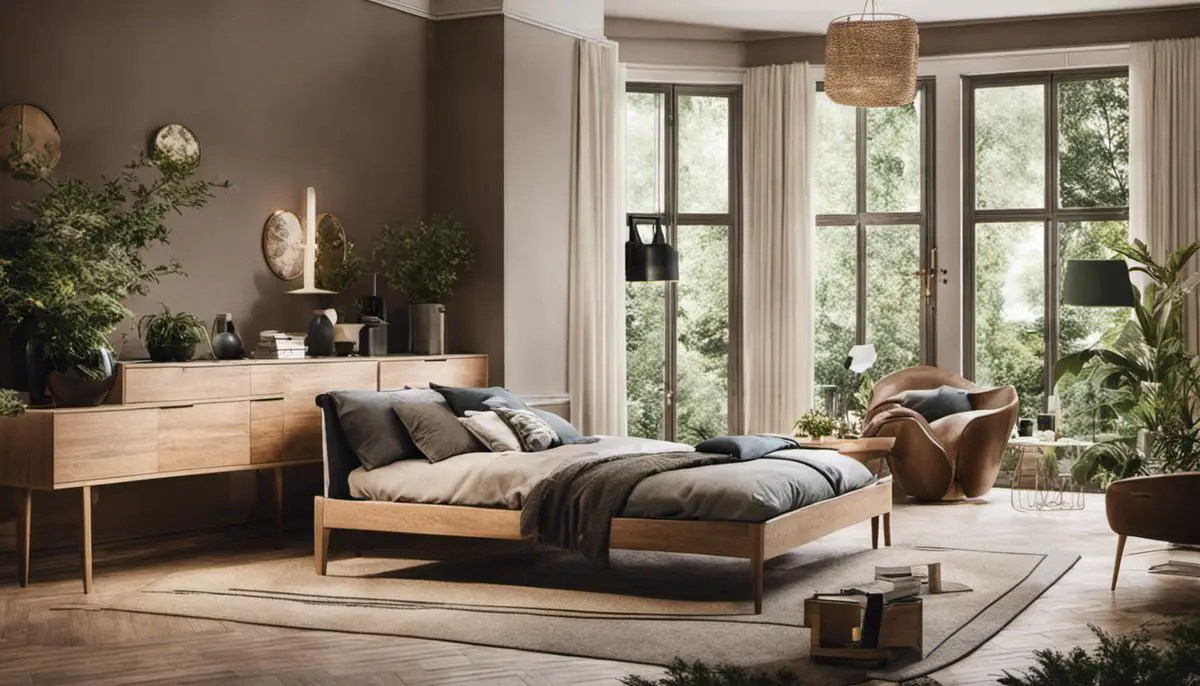
Imbued with the charm of Scandinavian design and the vibrant hues of garden landscapes, the perfect Scandi interior is a harmonious blend of simplicity, minimalism, and a dash of nature’s colors. It’s an aesthetic journey where each element is thoughtfully curated, and the emphasis stays equally divided between functionality and visual appeal. The symbolic meaning of garden colors and their psychological effects become essential considerations when planning the design layout. With practical strategies and real-world examples at your disposal, integrating garden-inspired colors into Scandianvian interiors can truly create living spaces that are as refreshing as they are aesthetically pleasing. Ultimately, understanding and experimenting with the Scandi theme and nature’s palette is a continuous journey of design exploration and aesthetic evolution.

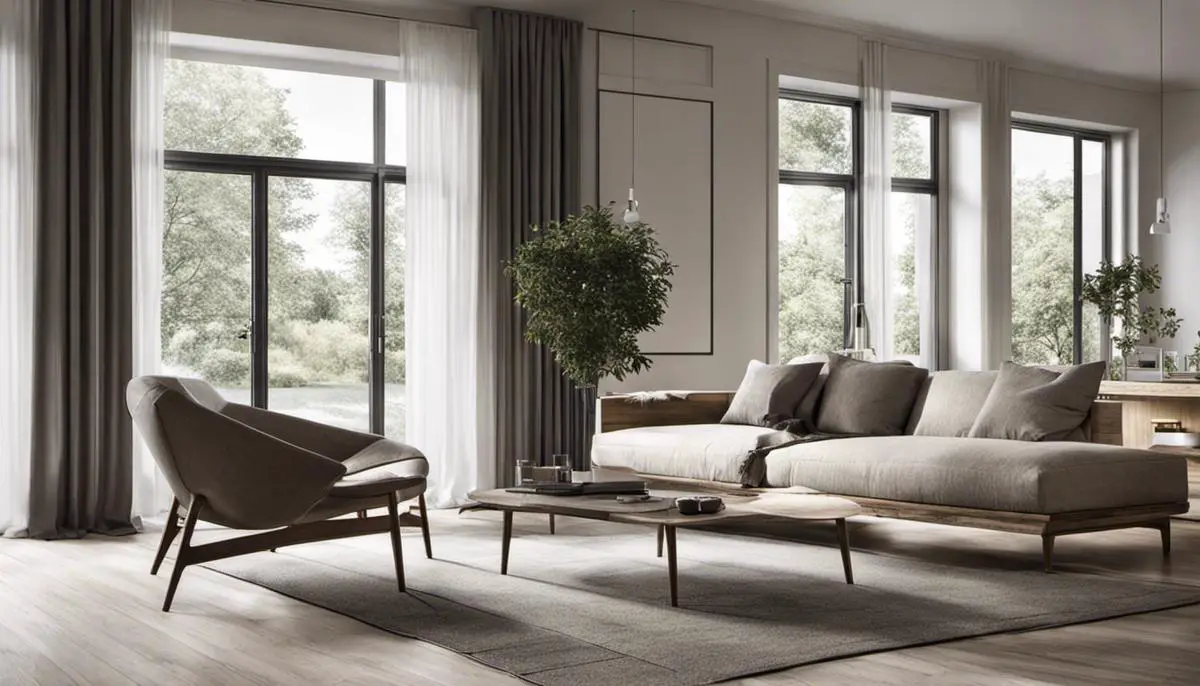
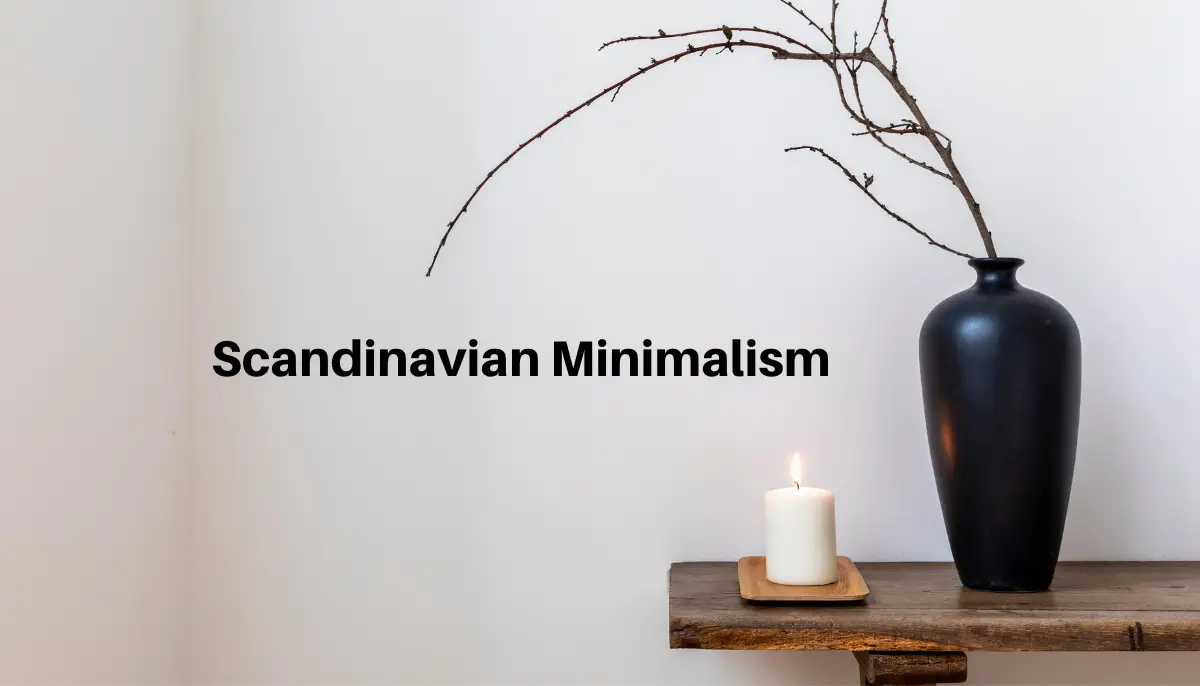
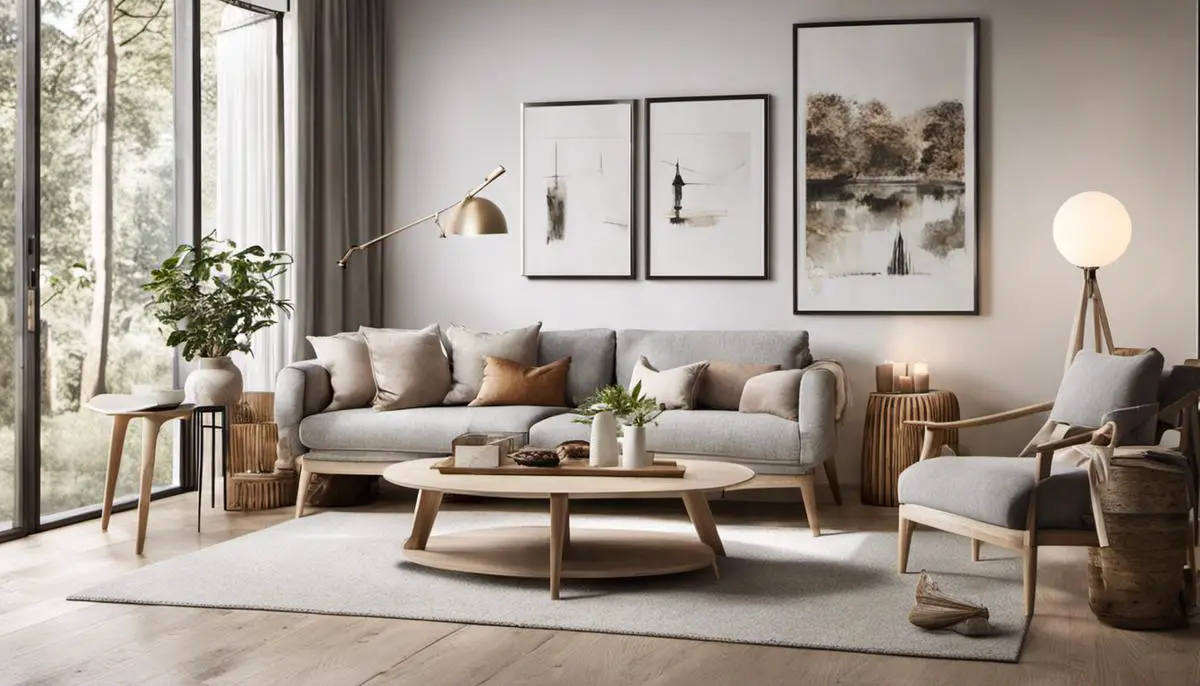
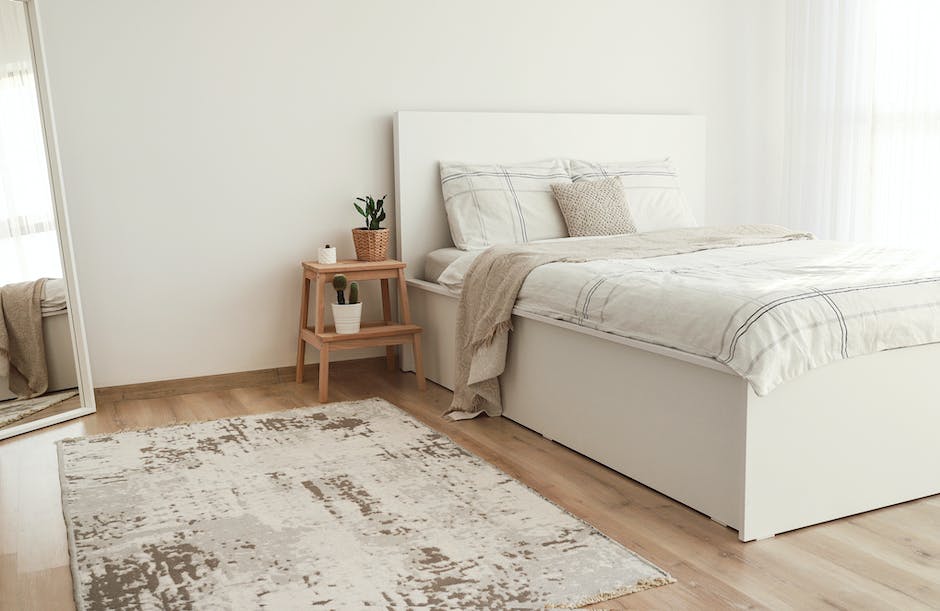
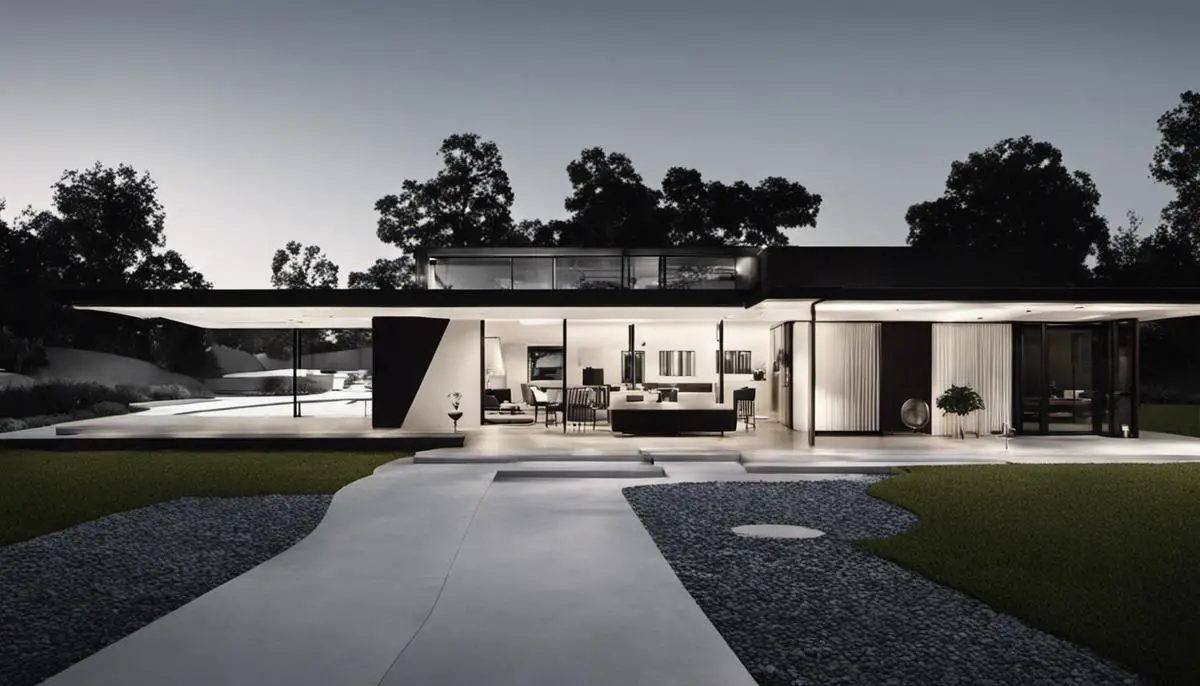
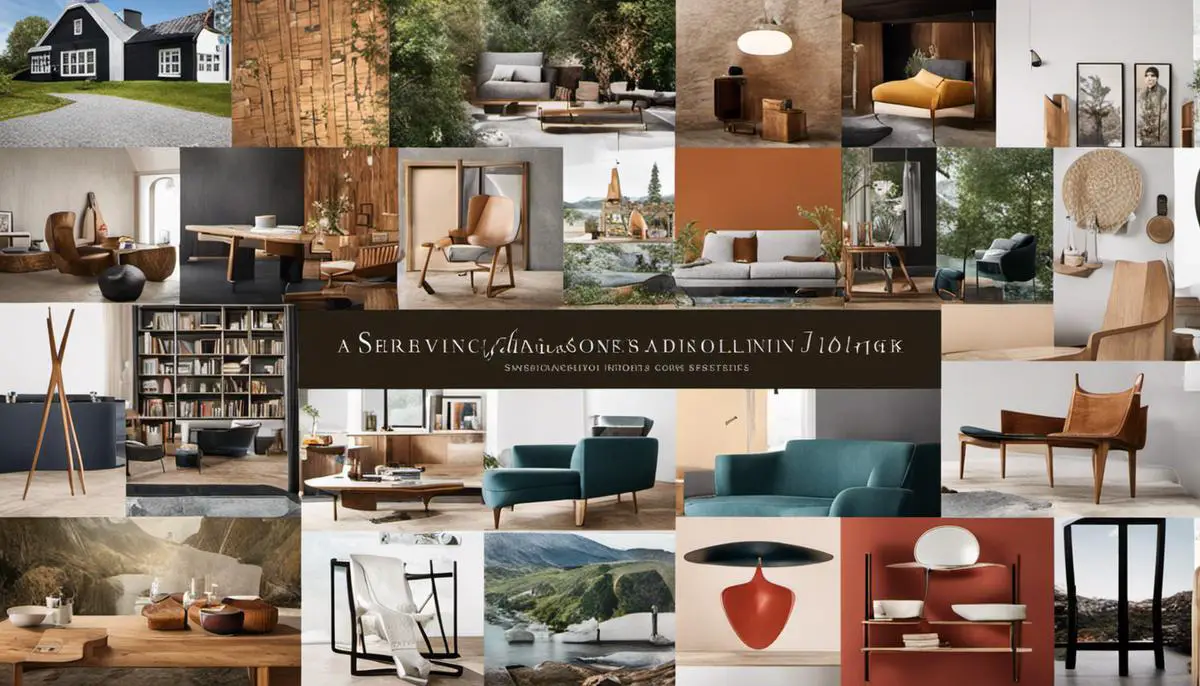
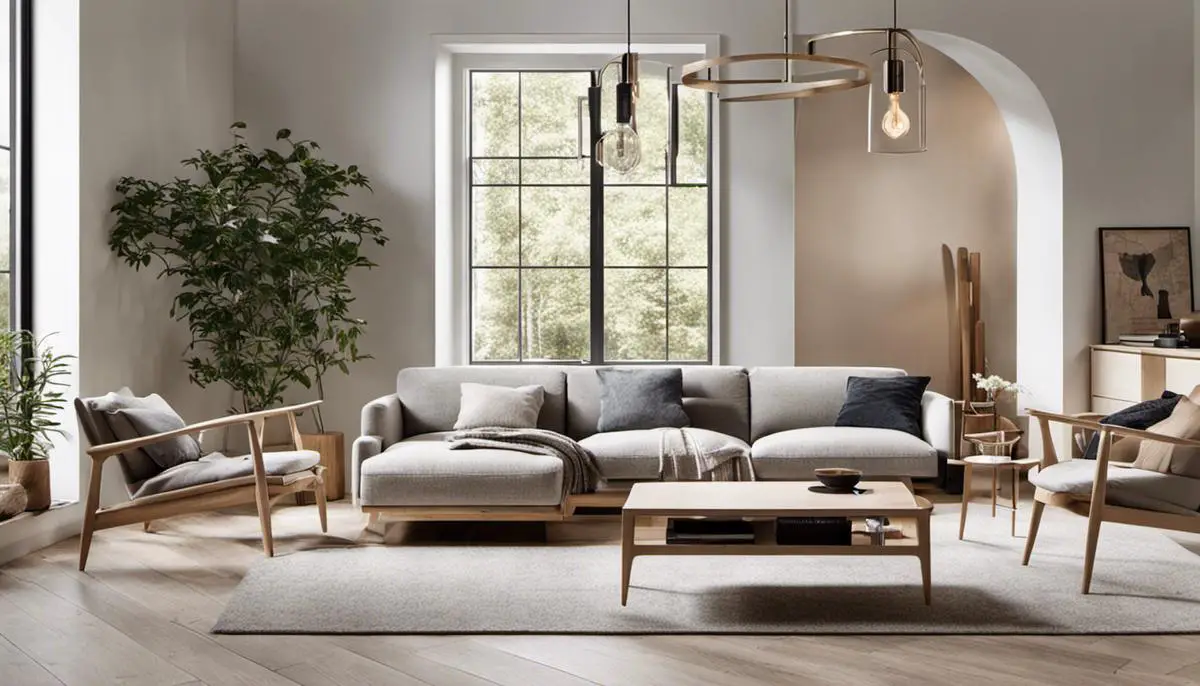

Leave a Reply